Flying into Paro provides a very close up view of the nearby hills – in fact the starboard wing of the plane almost touched the trees as we descended down Paro Valley. Not for the nervous! We were met by Karma our guide in his Gho, the Bhutanese national dress, a sign you are somewhere bit different. A short hop into town confirms this feeling; many locals are also dressed in the national costume; for woman this is the Kira; most by choice, however, government employees are required to when working. The other defining feature is the architecture; houses in Bhutan have to conform to a distinctive design, especially the windows. No plastic frames, but solid carved wood with intricate painted patterns. Another less welcome Bhutanese speciality is stray dogs. Noted for their ability to bark through the night, they are left to roam in packs as Buddhist philosophy does not allow culling. 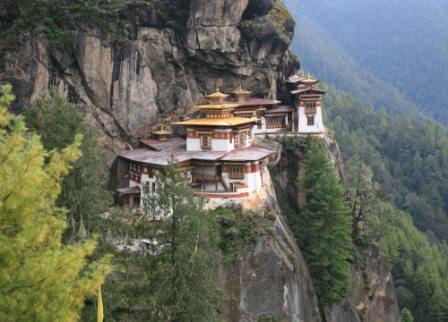
After a good night’s sleep, the Tigers Nest beckoned. A precariously perched monastery, it clings to a cliff side at around 9000ft. The climb up, about 3000ft of ascent from the starting point, affords fabulous views, the last part through cloud forest. Legs and lungs knew they had been given a good workout, but it was worth the effort. The monastery was burnt down around 25 years ago, but rebuilt exactly as it was, the labour provided by volunteers and those ‘punished’ for not wearing the correct national dress.
Thimphu, the capital, is about two hours by road from Paro. The largest town, it still conforms to Bhutan architectural norms; no skyscrapers here. The government have set up a college where traditional crafts are taught; carpet weaving, wood carving, thanka painting etc. Visitors are welcome! There seemed to be no gender prejudice, with girls woodcarving and boys weaving. The Motithang Reserve outside Thimphu has a few captive Takin, a rather odd beast that resembles a wildebeest, but is a distinct species that survives in the eastern Himalayas.
The main arterial road in Bhutan runs west to east across the centre of the country, here most of the main towns are located, these generally at an altitude in the 4000-7000ft range to give a pleasant, but wet, summer climate with cold winters. As Himalayan valleys tend to run roughly north to south, cross country journeys involve high passes. Heading east towards Punaka involved crossing the Duchu Pass, here sit a plethora of Buddhist Stupa and myriad prayer flags, also a teahouse with views to the distant northern peaks of the Bhutanese Himalayas. Beautiful isn’t usually used to describe road workers, at least not in the UK. Here the road was being repaired with steaming tar, the two girls lugging the large vats of hot tar were undeniably beautiful, almost certainly Nepalese guest workers. The roads are maintained with Indian money and Indian Army expertise, the labour imported. India fears a Tibet style Chinese invasion and wants to be able to react quickly if one occurred. As recently as 2005 the Chinese allegedly made incursions into northern Bhutan, even building roads in Bhutanese territory. The Indian Army has a considerable presence in Bhutan.
After lunch we walked across paddy fields to Chime Lhakhang, the monastery of the Divine Madman. A Buddhist guru from the 15thC, his philosophy involved copious sex and gluttony … well for the Divine Madman at least. For a small donation one’s fertility can be enhanced by the Abbot; this involves being hit on the head by a wooden phallus. Enough to make you feel a right dickhead! For a small donation we sponsored some prayer flags, these were hung by tree climbing monks outside the monastery. The wind for next few years would release our prayers, anyway until time rotted them away.
The next morning we walked around Punaka market, a colourful affair where local produce is sold. A line of very rundown toilets advertised 5 Ngultrum for urine 5 Ngultrum for stool, probably wise not to sit on this though! The morning highlight was to be a visit to Punaka Dzong, perhaps the most impressive Dzong in Bhutan. For those unfamiliar, Dzongs are huge forts containing administrative buildings and a monastery. A place where the Bhutanese could feel safe in the 17thC when Tibetan armies attacked from the north. Auspiciously, and scenically, it lies on the confluence of the Pho and Mo rivers. In the monastery the monks were washing the floor with buckets of soapy water. A very impressive interior, but like all monasteries in Bhutan photos are not allowed inside buildings; the reasoning is that photos can be tampered with, this could desecrate the religious paintings and effigies photographed. Outside the Dzong a man was cleaning the silverware in the river using sand. Better than Brasso? 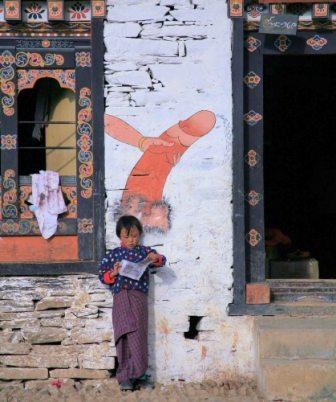
The afternoon saw us climbing another pass to get to Phobjikha Valley, the winter home of the black crane, a very rare bird. We stopped at Nobding, a small village. The reaction of the children indicated few foreigners passed through, surprising considering the murals painted to enhance fertility that were liberally painted on walls and doorways. It was obvious where the knob was in Nobding! Rather than describe them, a photograph will suffice.
The night was spent in a farmhouse. The altitude here is around 10000ft, so no running up stairs, not that there were any, only ladders. Basic but comfortable, all Bhutanese farmhouses are similar in design; three floors, the lowest mainly for storage and animals, the middle for living and the loft for drying produce under the roof. They are substantial buildings that house an extended family. Wandering around the hamlet in the early morning sunshine was an added bonus; some monks wandered through, their reaction on being asked for a photo indicated this was a first for them. Alas no cranes, but a small carpet weaving enterprise was ample compensation. The rugs are woven by womenfolk, the whole process uses local materials, the wool dyed with local dyes. An appropriate souvenir of Bhutan!
The drive to Trongsa Dzong was long and winding, the scenery on a scale not available in Europe. We chanced upon a game of khuru, Bhutanese darts, being played at the roadside by a group of men. The target is around 3ins in diameter and about 30yards away, the dart being thrown javelin style. The accuracy is impressive, darts landing close to and occasionally on the target. The V-shaped valley leading to Trongsa is steep and wooded with sides around 5000ft high. The opposite side to the road, across a river, is untouched primary forest. The locals will not visit it. The Yeti is said to inhabit remoter parts of Bhutan, this forest could easily have harboured a few; if they exist of course!
Trongsa Dzong is the primary Dzong of Bhutan. It sits astride the ancient west-east highway and until the modern west-east road was constructed a door within the dzong had to be passed though by all travellers. The steepness of the valley made bypassing this door ‘not an option’. The Penlop (the local ruler) of Trongsa wielded much power, and thanks to charging a toll for passage became very rich. After a civil war between the rival Trongsa and Paro valleys in the late 19thC, Ugyen Wangchuck, the Trongsa Penlop, was unanimously chosen as the first hereditary king of a unified Bhutan by leading Buddhist monks, government officials, and heads of important families. His great grandson Jigme Singye Wangchuck, aged 16, became King in 1972 and has proved a benign dictator putting his people first; he invented gross national happiness as the government’s main target. The king abdicated in 2006, aged 50, in favour of his son. The first parliamentary election
s took place in 2008, the optimistically named Bhutan Peace and Prosperity Party won taking 45 out of 47 seats. Will Bhutan change, only time will tell.
On the archery field next to Trongsa Dzong a contest was taking place. Archery is the national sport in Bhutan; their leading archers made the last 32 in the 2004 Olympics. This though was not Olympic archery! The arrows are shot at targets around 130 yards apart, the odd one hitting, this elicits a dance of victory from members of the same team who are confident enough of their colleagues ability to stand within yards of the target when the arrows are shot. As far as I know deaths are rare! Female followers watch from nearby knolls; it’s OK to put your opponents off, but this contest seemed to be held under Queensbury rules with no apparent barracking. Trongsa Dzong is a sprawling affair slung precariously on the hillside, in my opinion not as impressive as Punaka Dzong. 
After crossing another pass on the road eastwards, this time in cloud, we entered Bumthang Valley for a three night stay in Jakar. Our room had a wood burning stove for warmth (vital) with room service provided by a gentleman wearing a gho. The secret to lighting the wood quickly appeared to be the astute use of resin from off the wood; a good tip for any boy scouts/girl guides amongst you!
We had struck lucky. The next day the Tsechu Festival was taking place in Jakar Dzong; everyone, of all ages, attends, quite a throng in the Dzong. The main event for them, apart from dancing monks and ‘interesting’ music is the annual outing of the Jakar Thanka. This massive religious painting is hung from one end of the inner courtyard, the crowd, the youngest school kids included, slowly edge past kissing the Thanka before most make a donation to the monastery. The odd attendee prostrated themselves in front. We reluctantly left before the end, this involved pushing, literally, through the heaving throng to exit. A few spots of rain began to fall. We had a day trip planned to the Ura Valley, situated the other side of the Shertang Pass and little visited by tourists. The journey up afforded some great views when the cloud allowed, which wasn’t too often, alas.
On the outskirts of Ura village a field was being ploughed by a team of zho, the useful Scrabble word that defines an animal that is a cross between a cow and a yak (why not a cak or a yow!). Ura was poor but fertile. It started to rain so our picnic lunch was in jeopardy, Karma, our guide, got us invited into the dry of a large local farmhouse. We sat around the wood burning range in the kitchen, only their cats between us and the warmth of the fire. This visit proved providential for the family. One of our group was heavily into fabrics so she asked if they had any kira (the intricately woven female dress) she could look at; the family air looms, much worn, appeared and were sold for $190. This it turned out was enough to pay off their mortgage from the government that had enabled them to purchase the farmhouse. We left a very happy family behind us as we returned to Jakar. 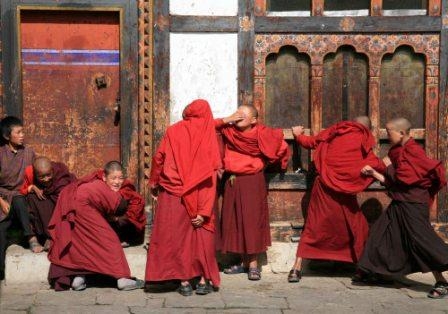
The next morning we visited nearby Tamshing Monastery. A run of the mill old Bhutanese monastery. Outside by the courtyard a group of boy monks were chanting their prayers, some rather reluctantly I thought. A bell rung, the boys jumped up and started to play in the courtyard, fighting and generally mucking around. Somehow this looks a little incongruous when the participants are wearing monks habits.
After a leisurely afternoon we had planned to go to see a film in the hall of a local school. The school was solidly built, the classrooms probably better than some in the UK. Education is a high priority, the pupils are taught 50% in Bhutanese and 50% in English, hence many kids speak good English. Higher education takes place in India, this of course requires fluency in English. The early showing was overrunning, we missed our film show. Surprisingly, there is a thriving Bhutanese film industry. In Thimphu later on I went to the ‘National Cinema’ and can testify to the high quality of Bhutanese films. Bizarrely the sound track was in Bhutanese, but the sub-titles in English!
We headed back west to Thimphu the following day, a long, tiring, but scenic drive. This time the Duchu Pass was covered in cloud, I now realised how lucky we’d been on our first traverse. The next day we returned to Paro and had time to visit Paro Dzong; this is another vast building that combines monastery with administrative buildings, including the local court. Many novice monks were milling around, some doing their homework. In Bhutan, as in many Buddhist countries, boys from very poor homes end up in monasteries where they get fed, clothed (in a habit) and educated. At around 18 years old most leave, so the ratio of young novices to older monks is high.
As we had been bumped off our flight to Kolkata the next day, we visited Haa Valley, the valley to the east of Paro, well off the main tourist track. To get there we crossed the Chele Pass, ascending towards it there were inspiring views of Chomolhari and Jichu Drakey, two of Bhutan’s highest peaks. On the pass, by now above the tree line, a notice proclaimed 3988m. A little higher, a short walk upwards, lies a sky burial site, here Edelweiss, a brilliant violet, carpeted the ground. No bodies now, in bygone days it was a clean way to dispose of the dead. Flags en masse sit astride the pass, as they flap prayers are released for a loved ones. Gone but not forgotten. There is a large Indian Army camp in Haa, also a monastery, Lhakhang Karpo, where we had a look see into the temple; a carpenter showed us a traditional Bhutanese window he was constructing, a kind of assemble it yourself kit, hand cut, not out of a box. Very skilful. The journey back to Paro, via a different route, proved very scenic. Indian migrant workers repairing the road seemed surprised to see foreigners passing, the school kids, in their school uniform ghos, also waved as if it was a rare sight. One group of kids appeared to be Monty Python fans hopping around on one leg as in the Long John Silver impersonators club sketch. The next morning we left for Kolkata and the mayhem that is India; quite a contrast to laid back Bhutan.
Bhutan is unique, mainly because it has been isolated from outside influences for so long; TV was not allowed until 1999, the first murder ever recorded soon followed. Buddhism is all pervasive, the first general election was put back to 2008 as 2007 was considered inauspicious by leading monks. Mobile phones are now common, even the odd drunk is evident on the streets of Thimphu where karaoke bars with pool tables can be found. My advice is visit soon before it changes … !!
PRACTICALITIES:
- Unless you have an Indian passport, Bhutan will be expensive – during the high season there is a minimum spend of $200, even when camping; this drops to $160 off season.
- Tours are organised through local companies who have control over where you stay and eat, this may change at short notice. Food will be included and apart from breakfast will be a buffet. The standard is generally good, but with little variety.
- Bhutan can be entered by road from India, by air by the only airport at Paro which is serviced by Druk Air – the Bhutanese national airline with flights from Bangkok, Kolkata, Delhi and Kathmandu. The lack of competition means flights are expensive; a return from Bangkok to Paro costs around $800.
- Providing you are expected, i.e. on a tour, a visa can be obtained on arrival.
- The currenc
y is the Ngultrum, it has parity with the Indian Rupee. Indian Rupees are welcome in Bhutan, however the Ngultrum cannot be used outside Bhutan.
I travelled with www.globaldrift.com.au run by Ian Marsh from Cairns, Australia, on an exploratory trip to find out whether to have regular trips to Bhutan.
LINKS:

 With host Kevin Brackley, the club’s Membership Secretary, at the lectern the London branch enjoyed the return of two of its most welcome speakers, Justin Marozzi and Jonny Bealby:-
With host Kevin Brackley, the club’s Membership Secretary, at the lectern the London branch enjoyed the return of two of its most welcome speakers, Justin Marozzi and Jonny Bealby:- ood. Often it is hard for an audience to follow such an ancient subject, but as Justin pointed out … much of what Herodotus experienced echoes through to our more modern era – Persia (Iraq) was torn apart by war, Greece & Turkey were mercantile & political rivals and Egypt was already deeply embedded into antiquity. For me & for subsequent reviewers however the most vivid moments were centred around Justin’s time spent lunching with Patrick Leigh Fermor, in the latter’s home in Greece … between the two men a warmth & personal bond developed over a long, languid lunch. I enjoyed their sense of shared eccentricities, their continued questioning of the wider world and the fact this meeting of the generations happened around a table with food & wine flowing…
ood. Often it is hard for an audience to follow such an ancient subject, but as Justin pointed out … much of what Herodotus experienced echoes through to our more modern era – Persia (Iraq) was torn apart by war, Greece & Turkey were mercantile & political rivals and Egypt was already deeply embedded into antiquity. For me & for subsequent reviewers however the most vivid moments were centred around Justin’s time spent lunching with Patrick Leigh Fermor, in the latter’s home in Greece … between the two men a warmth & personal bond developed over a long, languid lunch. I enjoyed their sense of shared eccentricities, their continued questioning of the wider world and the fact this meeting of the generations happened around a table with food & wine flowing… erennial favourite & all round nice guy Jonny this time spoke passionately about the Silk Route and Wild Frontiers’ experiences of including trips based along it into their calendar. To a particularly attentive audience, which also saw much of the club’s Committee counting up kisses from the man himself, Jonny regaled us with what it meant to him to travel the Old Silk Road on horseback. Whether it was talking about the stunning sights he had chance to enjoy, the enterprising & resourceful peoples he met or how he handled mishaps whilst on the journey, Jonny took us with him all the way. His talks are never dull and as shown by the raft of questions afterwards, Jonny engages his audiences.
erennial favourite & all round nice guy Jonny this time spoke passionately about the Silk Route and Wild Frontiers’ experiences of including trips based along it into their calendar. To a particularly attentive audience, which also saw much of the club’s Committee counting up kisses from the man himself, Jonny regaled us with what it meant to him to travel the Old Silk Road on horseback. Whether it was talking about the stunning sights he had chance to enjoy, the enterprising & resourceful peoples he met or how he handled mishaps whilst on the journey, Jonny took us with him all the way. His talks are never dull and as shown by the raft of questions afterwards, Jonny engages his audiences.



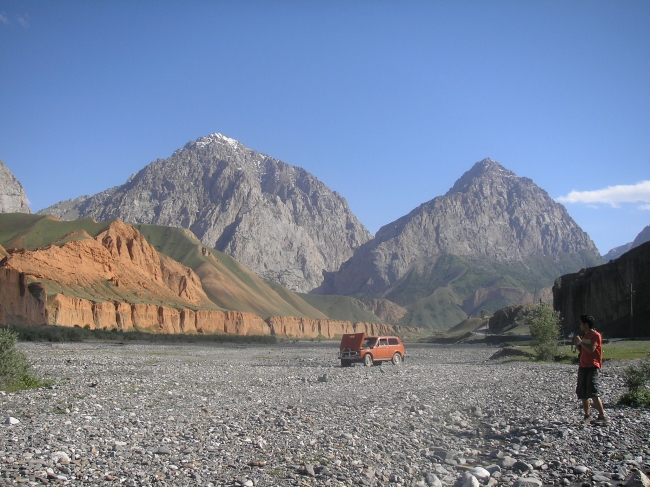
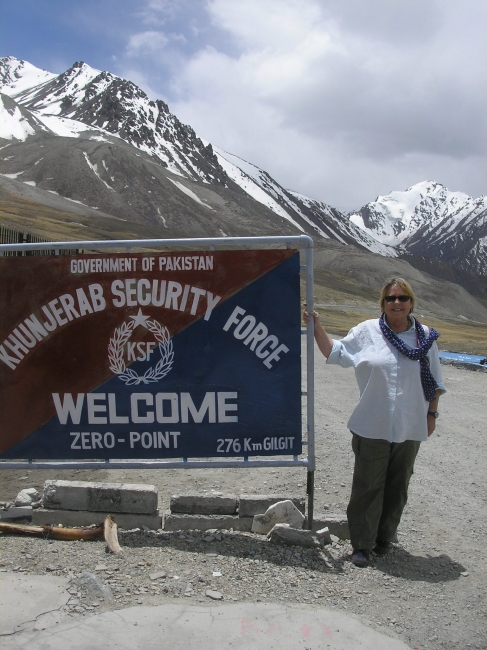
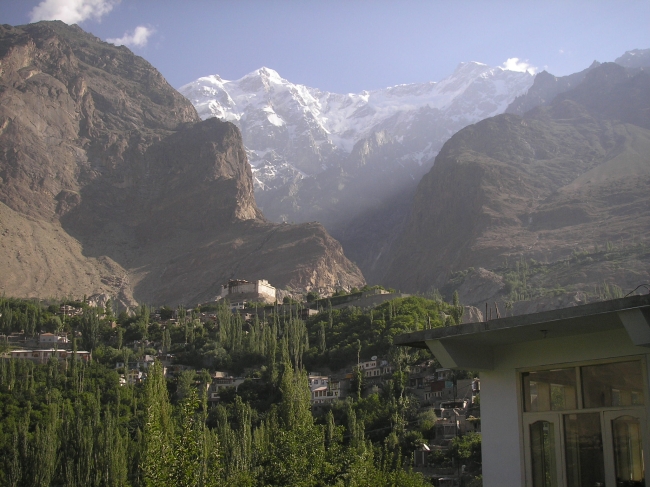
 egular contributor Mac ruminates on the world of travel & some of his adventures along the way This time round he’s reading and enjoying A Sense of Place , Great Travel Writers, Talk About their Craft, Lives and Inspiration by Michael Shapiro.
egular contributor Mac ruminates on the world of travel & some of his adventures along the way This time round he’s reading and enjoying A Sense of Place , Great Travel Writers, Talk About their Craft, Lives and Inspiration by Michael Shapiro.